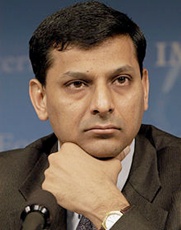Fed turned more accommodative under Yellen, says Rajan
15 Apr 2016
The US Federal Reserve's current policy stance against driving huge amounts of liquidity into emerging markets through quantitative easing has helped policy makers in developing countries to avoid the impact of currency volatility, Raghuram Rajan, governor of the Reserve Bank of India, said today.
 Rajan, who has been a critic of the Fed's policy of monetary expansion through quantitative easing, especially under Ben Bernanke, praised its current chair Janet Yellen for paying more attention to emerging markets, including India and China.
Rajan, who has been a critic of the Fed's policy of monetary expansion through quantitative easing, especially under Ben Bernanke, praised its current chair Janet Yellen for paying more attention to emerging markets, including India and China.
"They (US Fed) certainly are paying more attention and talking about paying more attention (to emerging markets), which I think is a very welcome step," Rajan said in an interview to The Wall Street Journal.
"I think that's changed quite a bit under Yellen."
Under Bernanke', the Fed's expansionist monetary policy used to drive waves of capital into and out of emerging economies – destabilising the vulnerable economies that were often unable to deal with its impact on factors such as developmental investments and inflation.
Rajan said the current shift in the Fed policy allows the emerging markets more room to address issues like currency volatility and declining commodity prices. Referring to the Fed move to slow the pace of their rate hikes, Rajan said it has helped take a little bit of pressure off on others.
The RBI governor is in Washington for the spring meeting of the World Bank and the International Monetary Fund (IMF) as part of the Indian delegation led by finance minister Arun Jaitley.
Rajan said the shift in US Fed's thinking will give other economies breathing room to address their problems - like sinking commodity prices hurting commodity-exporting countries and high US dollar debt loads affecting companies in some emerging markets.
This, aided by benign inflationary pressures, both domestic and external, has helped India reduce its current account deficit, as also narrow the fiscal deficit, giving the economy more flexibility to manage the turbulence, the governor pointed out. He, however, was apprehensive if all developing countries were able to manage their economies well
"Are other countries capable of using the time well, or are the problems beyond their actions?" Rajan wondered.
He also was unsure whether India could move towards a low-interest regime. As regards to more rate cuts, however, much would still depend on inflation and monsoon rains, he added.
"We're looking at inflation. If it continues on a downward path, that would create room. We're looking for signs of a good monsoon. Unfortunately, India is still somewhat sensitive to monsoons, though people find it hard to see a link between monsoons and food prices," he added.













.jpg)






.jpg)









